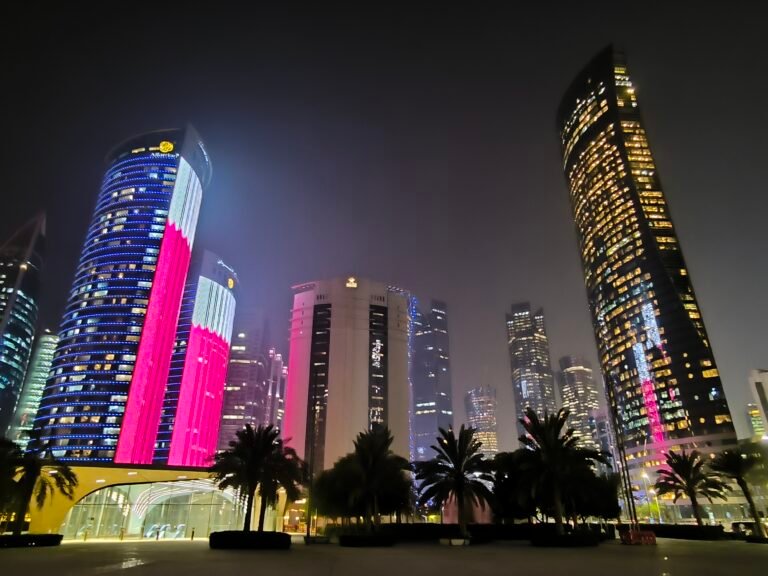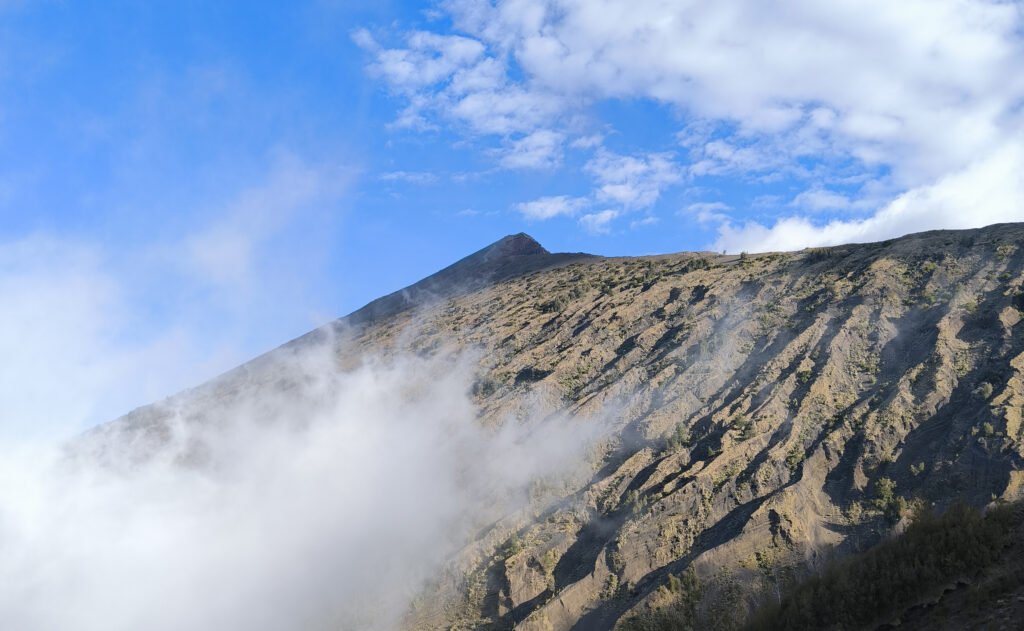
Looking for a physical and mental challenge while in Indonesia? With almost 150 volcanoes, there are plenty of demanding trekking options. Mount Rinjani on Lombok is one of them. Being the second tallest with an elevation of 3726 meters above sea level, it will surely satisfy your challenge-cravings. Read on for practical information about the trek, as well as my experience and overall impression.
Table of contents
How many days to trek Mount Rinjani?
There are various formats for this trek depending on the route and your ambitions. If you wish to reach the summit you either go for 2-days-1-night or 3-days-2-nights. Either way, do not expect to reach the summit and come back down in one day – depending on your starting point, the elevation difference is 2600 meters or more! The 3-days-2-nights trek is ideal to take the longer route to also see the lake and hot springs.
If you don’t feel like going all in to reach the summit, you can still have a great hike to the Senaru Crater Rim which is ideally done over two days with one night on the rim itself.

Can a beginner climb Mount Rinjani?
The Mount Rinjani trek is not a beginner friendly hike. Expect steep ascends (and descends which aren’t really easier!) and complicated terrain throughout the entire trek, hours at a time. If you are not used to trekking, I do suggest that you conquer some lower peaks first. (If you’re into volcanoes check out Mount Batur on Bali!)
This is not to discourage you! If you’re up for a challenge and feeling fit, this trek isn’t extreme. None of us are doing it because it’ll be easy, right? If you have a clear goal of finishing, you’ll be surprised to see your legs keep on pushing.
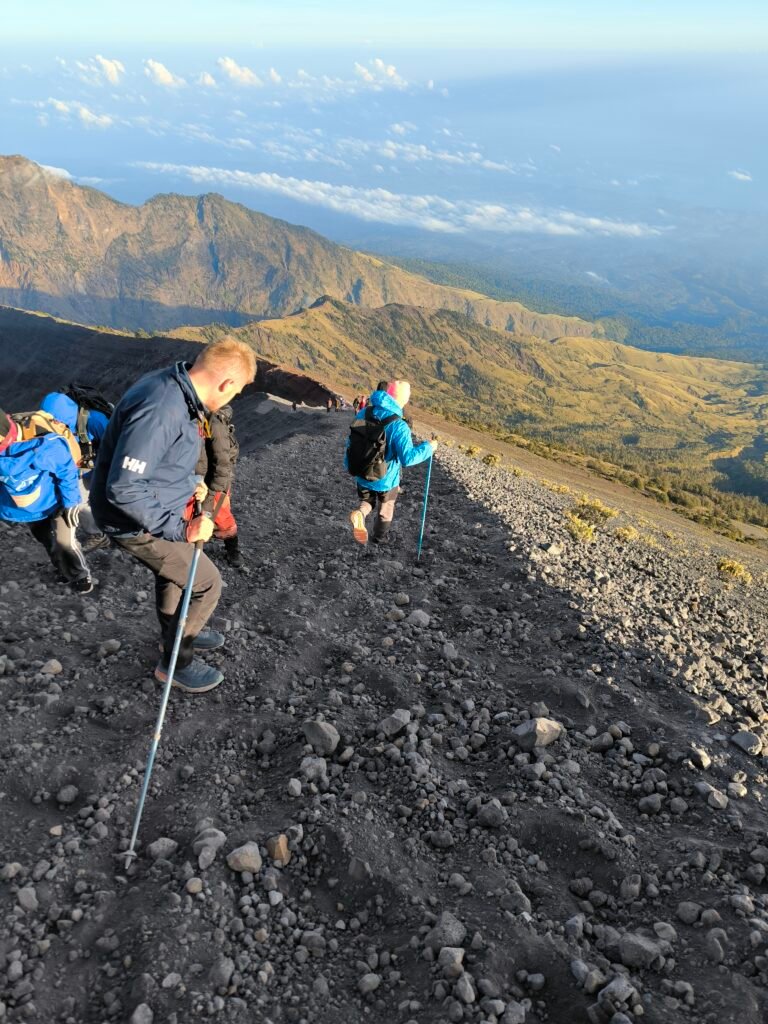
How to book a Mount Rinjani Trek?
I booked on Tripadvisor and can recommend this for convenience. There are many options and each clearly states the duration of the trek and what is included. There are also local agencies around Lombok that will be happy to book a tour for you.
Make sure it’s all clear regarding what you get and what you have to take care of yourself. For example my trek included the national park entrance fee, which you otherwise would have to pay extra on arrival. Some tours will also offer you to rent equipment such as headlamp and hiking poles, but make sure to come well prepared because it may be some extra hassle otherwise.
So how was the trek?
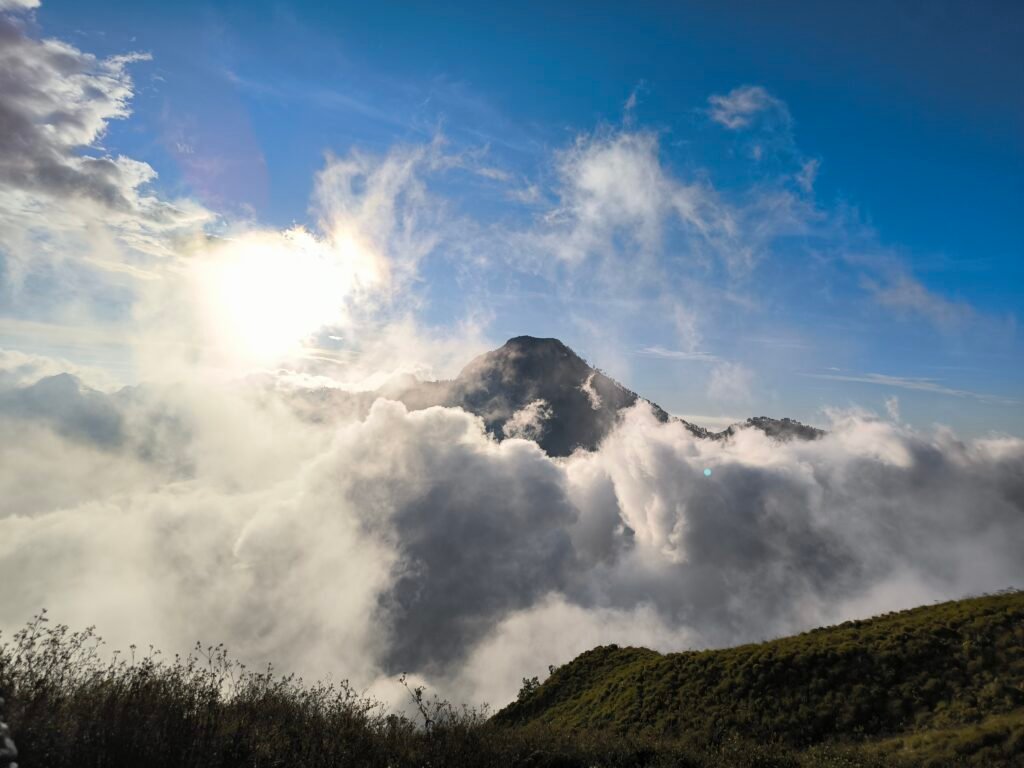
You’re curious about the trek itself? Here is my experience. (Keep in mind that the pictures don’t make the views justice😊.)
Up to the crater rim

While you will begin with a nearly flat walk through forest and field paths, you can expect steep dusty sand-dirt going to the crater rim. Some parts will require you to hold on to roots or rocks. Just make sure they’re properly lodged into the ground before pulling on them.
The crater rim itself is exposed to wind and will be cold by the time you reach it. This is the main camping site to stay for a short night before going for the summit for sunrise.

The push to summit
From the crater rim starts the intense climb through dust and gravel and occasional big rocks to overcome. This means that for every 5 steps up, you may slide 2 or so steps back down🙃. I found this part to be very easy on the way down though!
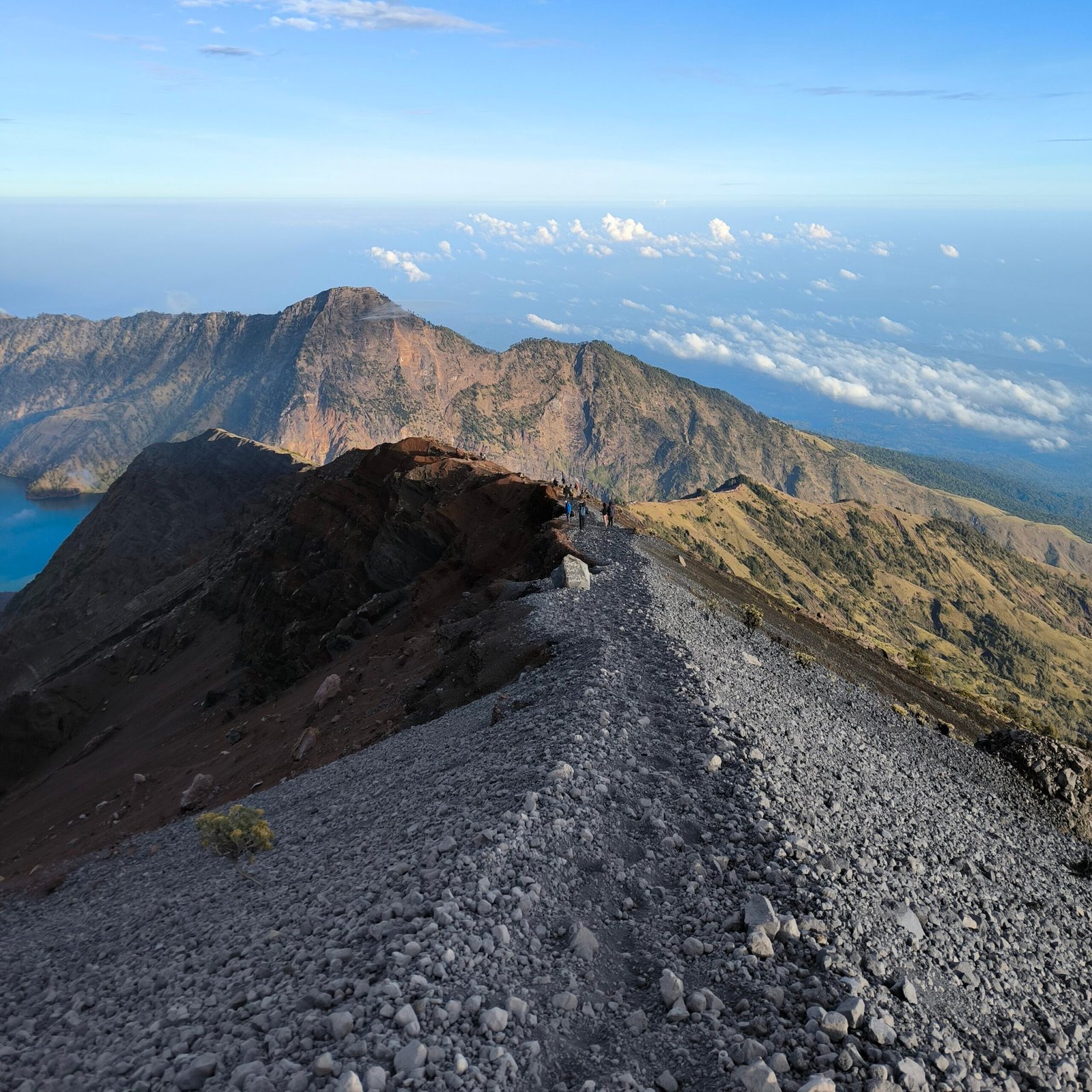

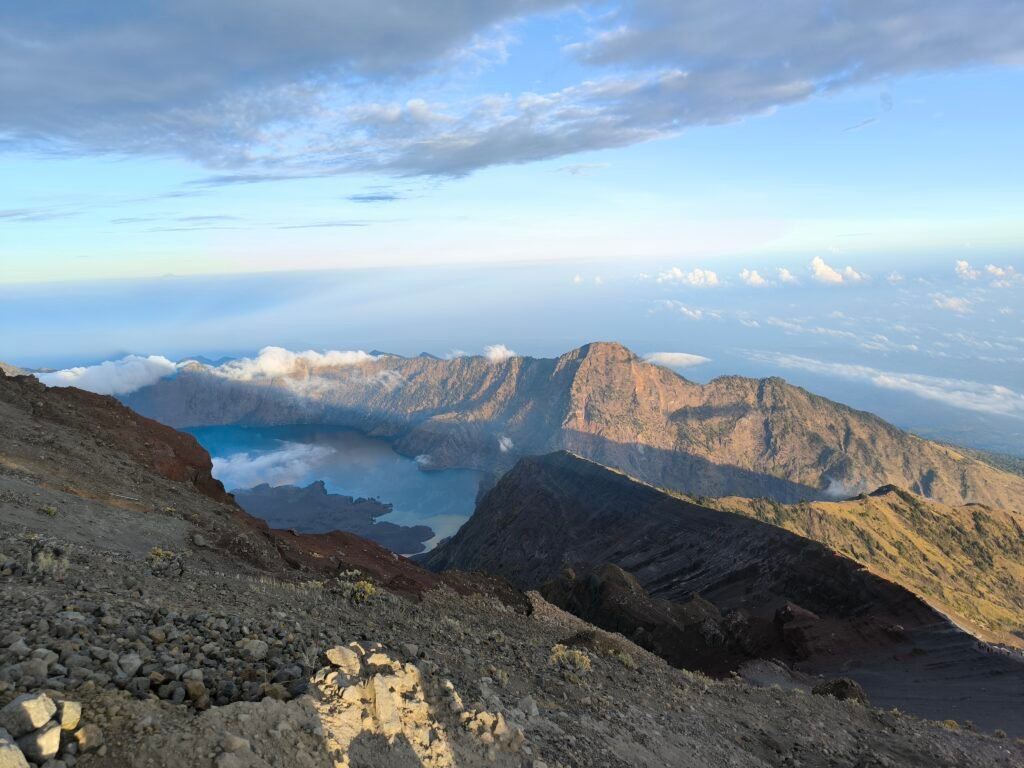
Sunrise☀️

For many, the highlight of a Mount Rinjani trek is of course the sunrise. As you’re located on the highest point of Lombok, you have a good chance to see a spectacular scene. During the dry season (April to November), fully cloudy morning are uncommon.
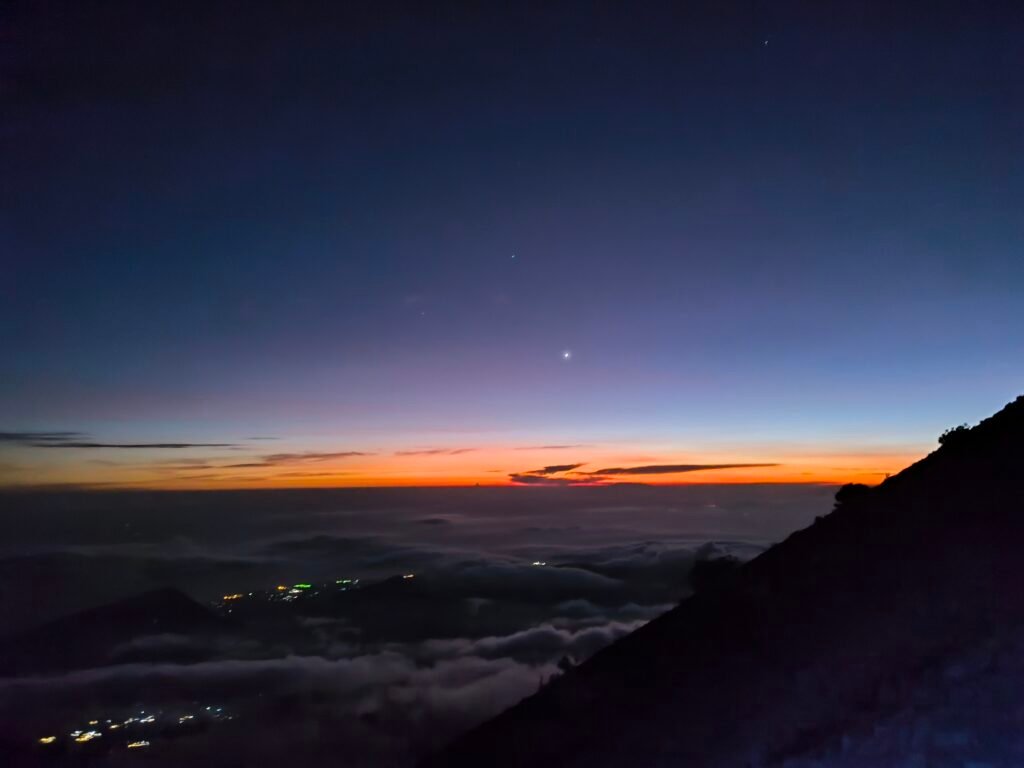
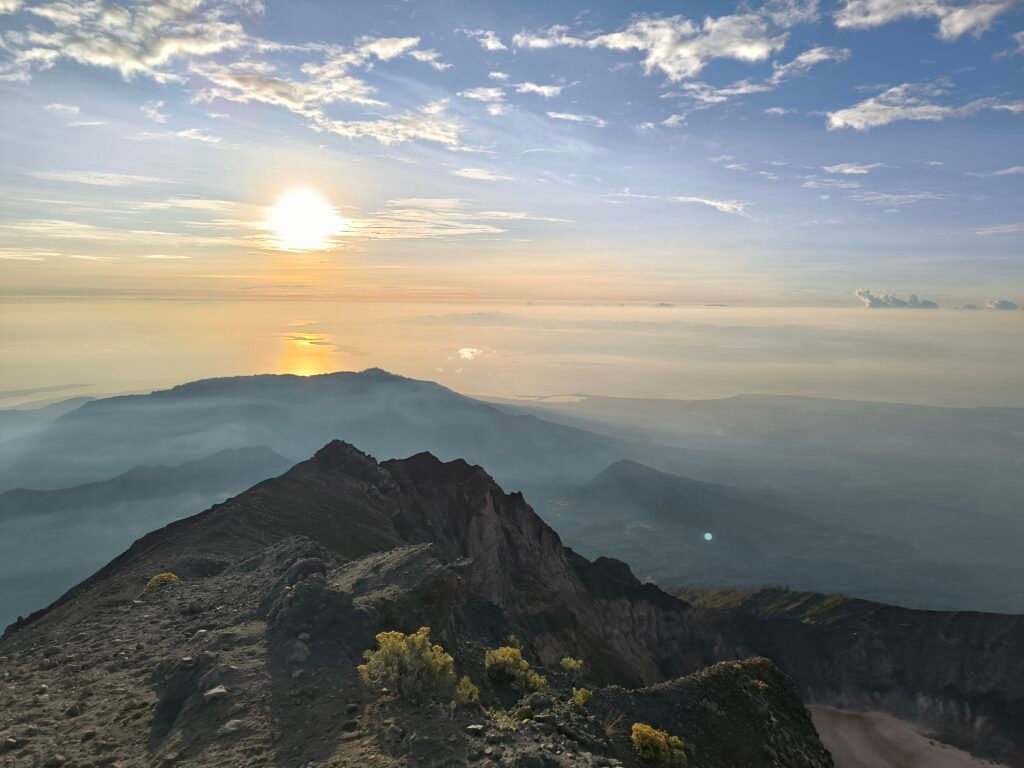

Down to the lake
If you choose to take the lake-route from the crater rim (usually the 3-day-2-night trek), the terrain gets even more interesting! The descent toward the lake is extremely steep and some parts have to be climbed down backwards (luckily, some places have ladders). This is also the part I found most beautiful, and peaceful.

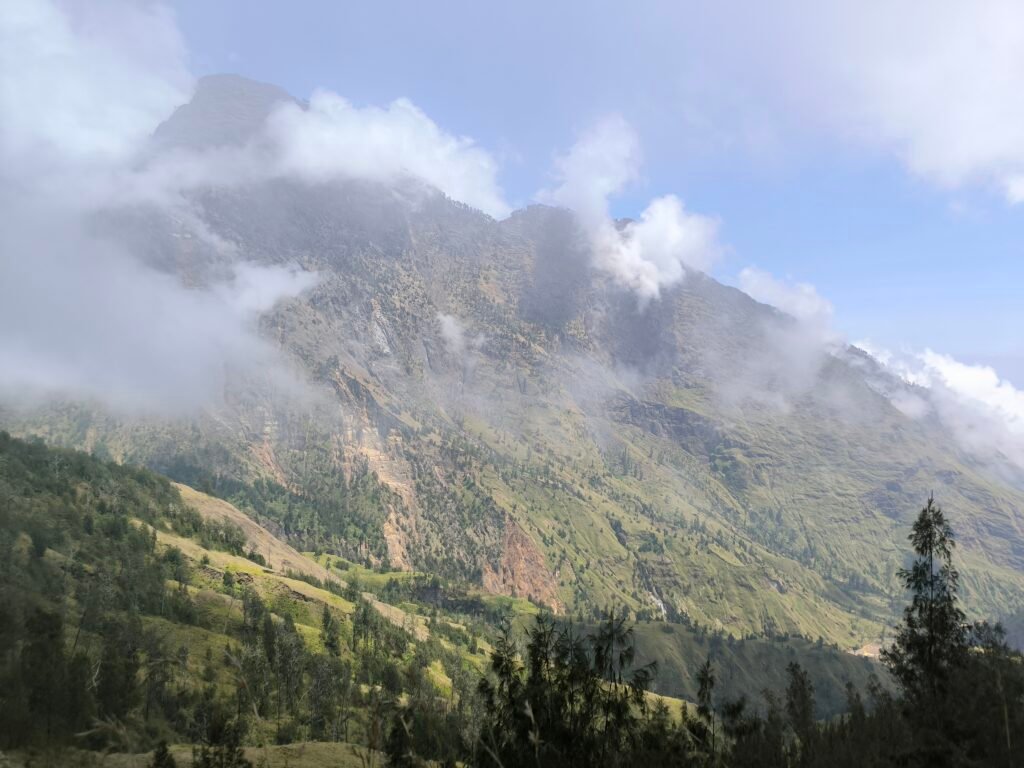
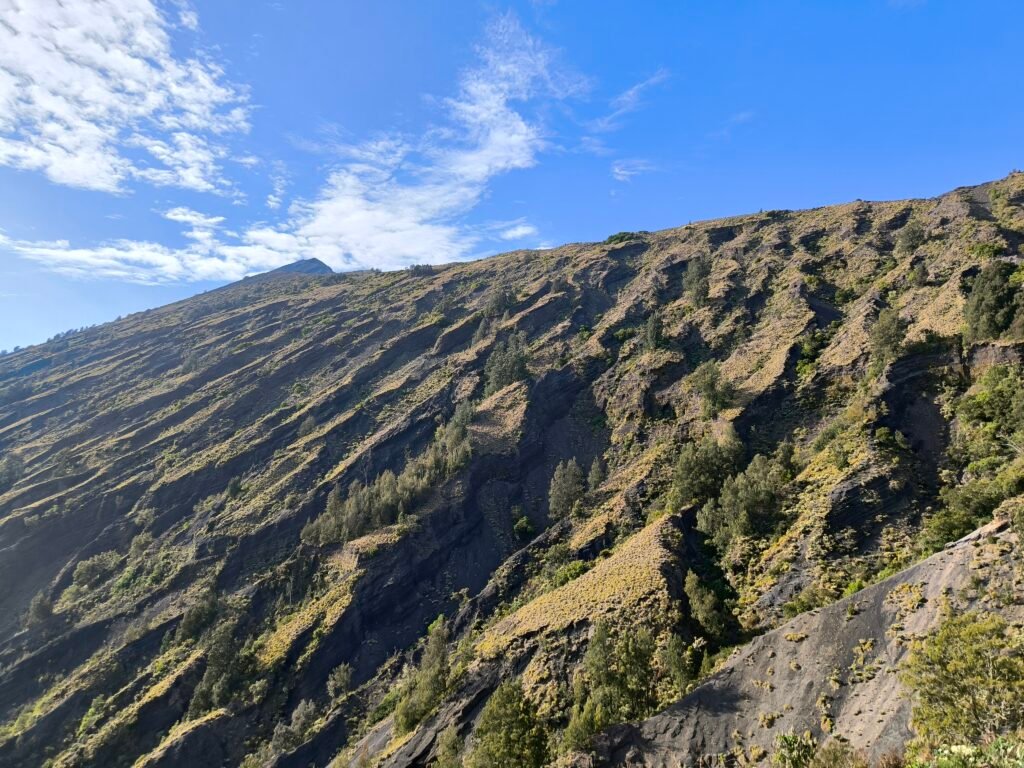
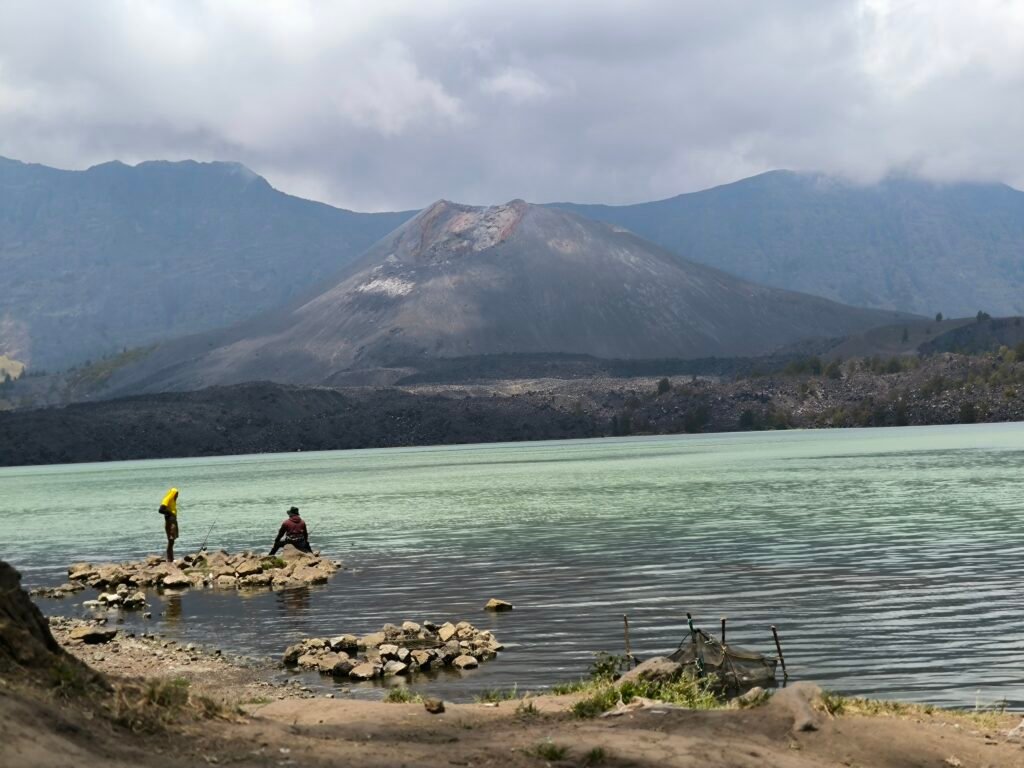
Hot springs and onward
Close after the lake are the hot springs. Even though this was the “big descent day”, the elevation stacked up quite a lot as we traversed up and down over the uneven volcanic terrain. Even this part was exhausting.
When choosing what to book, I highly recommend making sure that the hot springs are a planned stop. After two days of sweat and dust, a warm mineral-bath will never have felt so good.
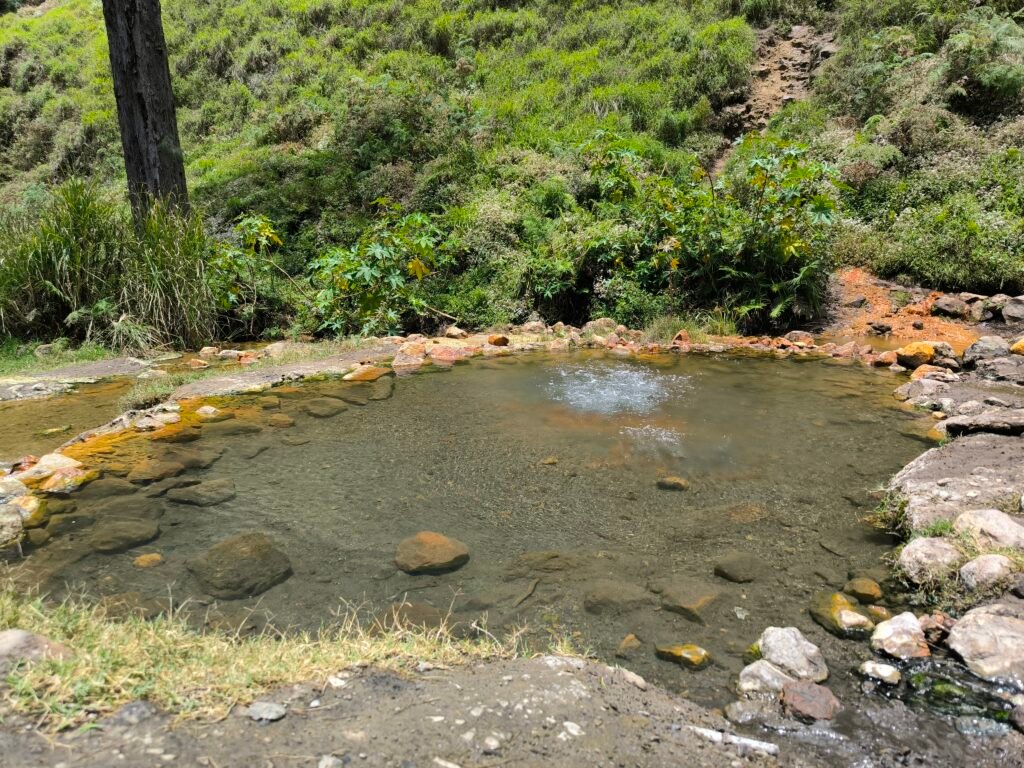
As you keep walking past the hot springs you will see (and even cross) the beautifully colored volcanic river, as well as multiple waterfalls.


Personal highlights
The environment blew my mind. I expected some regular Indonesian greenery and then some rocky terrain toward the top. But I was presented a mix of everything from New Zealand-like mountaintops to jungles reminding of South America, tall waterfalls and winding rivers and of course amazing sunrises. If there is one main reason to this trek, this is it.
The challenge. As mentioned before, it’s not intended to be a walk in the park. Seeing your body carry you on for multiple days through terrain like this is quite an experience. (And the rest afterward will surely feel amazing as well.)
Group spirit. I highly recommend you do this with a group of new people. Surely doing it with your buddies will be fun, but I really enjoyed meeting people this way. Walking next to each other all day is a great opportunity to get to know eachother.
The hot springs. This literally saved me. A warm bath has never felt so good. The temperature was almost too hot, but still fine to relax for a while. This felt rejuvenating and energizing which kept me going for the rest of the day.
The trash
Every coin has two sides, and one thing that certainly worsened the quality of my experience on Mount Rinjani was the trash.
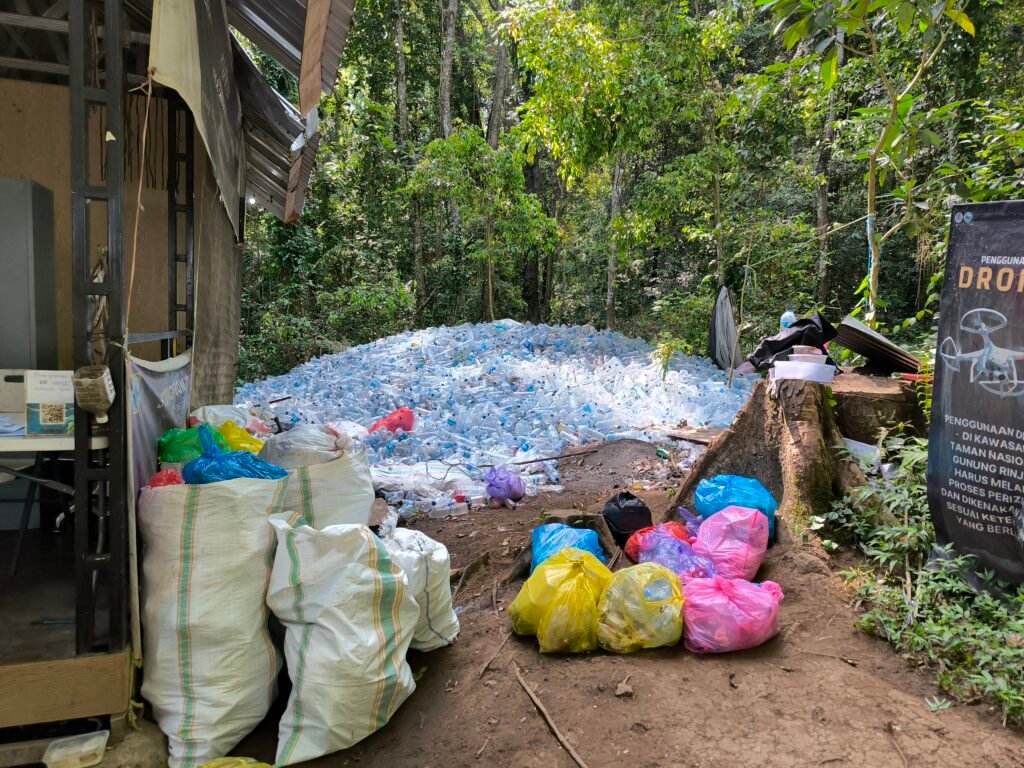
Do not expect cleanliness. Even though the area is a national park, the amount of trash along many parts of the route will be surprising to many travelers. The combination of heavy tourism with a lack of effective waste management leads to very unfortunate consequences for the once pristine area. And it of course spoils the experience for travelers who have to keep up with ruined views and occasional bad smelling areas.
Please, be one of the people who take care of the environment and bring your trash with you.
Other things to keep in mind
Here are some other general points that you should know before trekking Mount Rinjani.
- A tip is expected. It is expected for you to pay the porters and guides going with your group. Each person would pay 100k+ IDR per porter.
- It gets cold up there. Seriously, be prepared for only a couple degrees above freezing and strong wind!
- Bring snacks. Although we were generously served fresh breakfast, lunch and dinner, the amount may or may not suffice for you during multiple days of physical activity.
- Consider bringing a bandana or other kind of mouth cover. Many parts of the trail are dry and sandy so you may find yourself in an unpleasant cloud of dust.
- No swimming in the lake. The crater lake is considered sacred and our guides told us it is discouraged to swim there. Feel free to dip your legs and freshen up a bit.
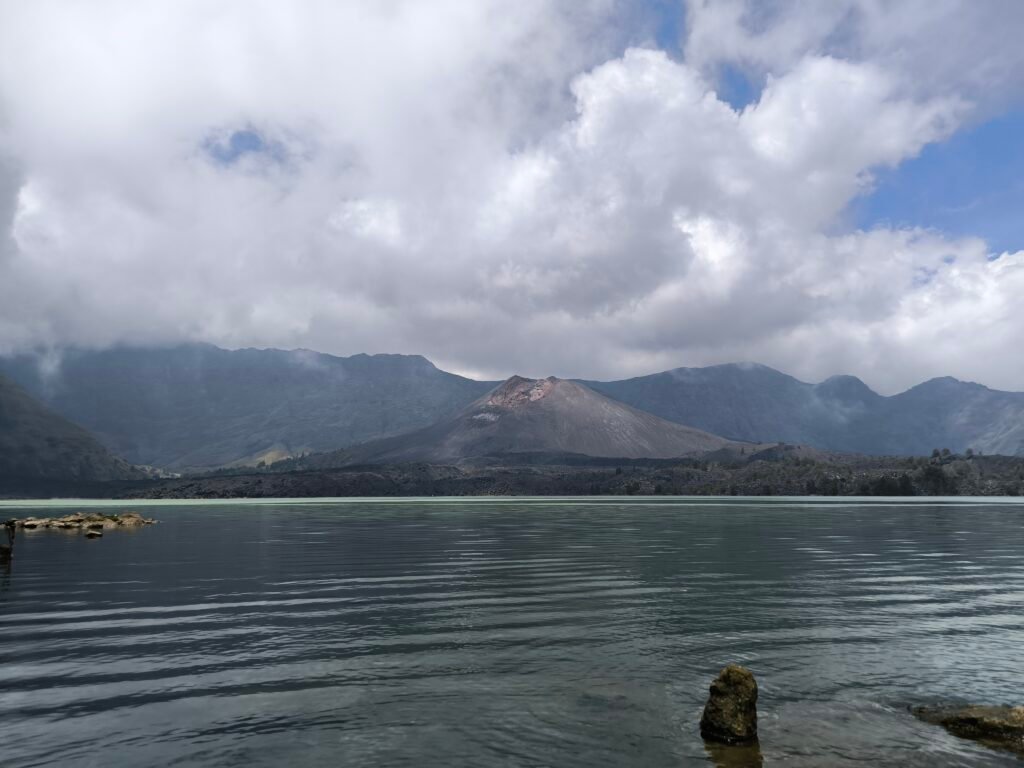
Good luck!

